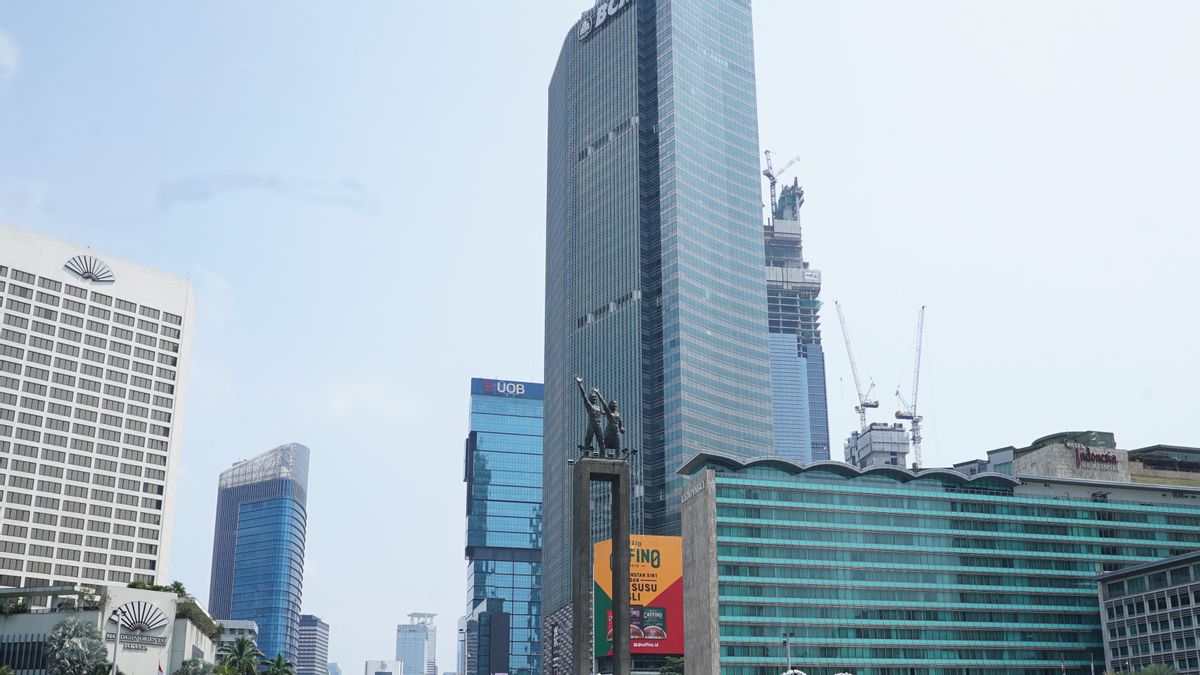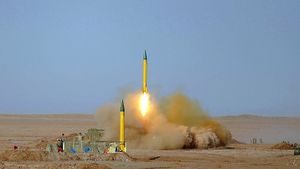JAKARTA - In addition to stagnating various business sectors, the COVID-19 outbreak also has the potential to change the world economic order, which is marked by a change in the world trade map. It is certain that global trade performance will be disrupted due to the slow improvement in manufacturing performance, particularly in China, until the first half of this year.
Coupled with logistical distribution channels that are also disrupted, negative impacts will inevitably hit the Indonesian economy in the foreseeable future. This conclusion was obtained by the Center for Thorough Research Vision (VTS) through a research study entitled 'Limbung Roda Terpasak Corona'.
According to the pandemic simulation test with a dynamic system model by Thorough Research Vision researcher, M. Widyar Rahman, the corona virus pandemic in Indonesia is expected to subside in early June 2020. Then, if the COVID-19 outbreak in Indonesia is estimated to subside in June 2020, how can it be? with Indonesia's economic recovery?
"Of course, the economic recovery process will take longer, at least until the end of 2021," said Widyar, in a written statement, Monday, April 27.
According to Widyar's analysis, a pandemic will not last for years in Indonesia. Through the active role of all citizens, the reduction in the number of COVID-19 cases should be faster than the model estimates. However, this is still influenced by the policies taken by the government in an effort to suppress its spread.
"We estimate that the increase in demand for goods and services will occur in the months of Ramadan and Eid al-Fitr, although it is not like previous years. However, this slight increase in demand is not enough to compensate for injuries to the industry," he said.
This is because the fulfillment of stocks that should have been carried out two to three months before Ramadan could not be fulfilled due to stagnant imports. Seeing the massive impact, the losses incurred by the COVID-19 pandemic are certainly not playing games.
"When compared to the 2002-2003 SARS outbreak which also originated in China, the negative impact of the outbreak of COVID-19 on the economy will be much broader," he continued.
In relation to this impact analysis, the Vision collects various information to estimate the impact that will occur on the Indonesian economy. The study was conducted from February to early March. The analysis carried out began by looking at the economic relations between Indonesia and China, as the initial epicenter of the spread of the virus.
In the last five years, China has always been in the top three of Indonesia's main trading partners. In fact, since 2014, China has been the country of origin for imports with the greatest value for Indonesia.
Based on the categories of consumer goods, raw materials and capital goods from January to December 2019, it is increasingly clear that Indonesia's dependence on China. Of the three categories of goods imported by this country, as much as 37 percent of consumer goods, 25 percent of supporting raw materials, and 44 percent of capital goods are clearly imported from China.
In terms of direct investment, during the span of the last five years (2016-2019), Indonesia received a flow of Chinese investment of US $ 13.2 billion or the third largest for Indonesia.
Apart from investing, China also has a big role in the tourism sector in Indonesia. In 8 years, Chinese tourists increased by 309 percent, from 511 thousand in 2010 to 2.14 million in 2017.
Raw Material Stock
Senior Vision Researcher, Sita Wardhani said, from the production side, the average domestic producer has stocks of raw materials until March and April 2020. If in those months there is no supply from China or only a little is met, the factory production process in Indonesia can be blocked.
"The minimum impact on the economy is assuming the Chinese economy will revive and resume activity in April," said Sita.
There is little hope from the release of China's National Bureau of Statistics (NBS) regarding China's official Purchasing Manager Index (PMI) which rose to 52 in March 2020. In February, when the pandemic was on the rise, China's PMI was only 35.7, a record low. that China has ever experienced. For information, a number above 50 indicates that the industry is experiencing expansion. Conversely, a number below 50 describes a condition of contraction.
Still according to NBS, China's industry generated revenue of 370.66 billion yuan or 52.43 billion US dollars in March 2020. This value fell 34.9 percent compared to the previous year, and continued the trend in January-February which recorded a decline of 38.3 percent.
At least, according to NBS, eight of the 41 industrial sectors surveyed recorded an increase in profit in March. This condition is better than January-February, which recorded only four sectors experienced an increase in profit.
However, it is believed that this does not indicate a stabilization in economic activity. This is because, in the midst of higher production costs due to disruption of distribution channels, market demand has not fully recovered. Moreover, there has been a decrease in import demand from other countries, including Indonesia.
"However, if the recovery period experienced by China is any longer, the assumption is that China will return to production in June, meaning that the import process can only be carried out in July. That way, the impact of the recession facing Indonesia will be even deeper," he said.
Apart from being experienced by the food and beverage industry, he continued, other manufacturing industries would also experience deeper disturbances. The impact of this raw material shortage will lead to higher inflation because the manufacturing industry is unable to meet demand and triggers shortage or excess demand.
On the other hand, with high inflation, of course households will reduce their consumption. In fact, the biggest contribution to Indonesia's economic growth so far is household consumption.
"With a high inflation rate, household consumption has also decreased in line with decreasing purchasing power. As a result, economic growth could further decline," said Sita.
The English, Chinese, Japanese, Arabic, and French versions are automatically generated by the AI. So there may still be inaccuracies in translating, please always see Indonesian as our main language. (system supported by DigitalSiber.id)












